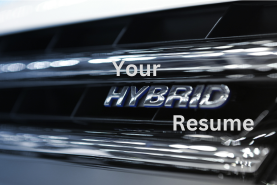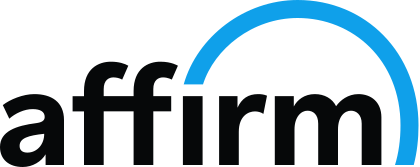 When you are re-entering the job market, changing careers, or have a diverse work history, traditional chronological resumes might not fully highlight your unique strengths. A hybrid resume format, which combines elements of both functional and chronological formats, can be the solution that showcases both your skills and work experience to their best advantage.
When you are re-entering the job market, changing careers, or have a diverse work history, traditional chronological resumes might not fully highlight your unique strengths. A hybrid resume format, which combines elements of both functional and chronological formats, can be the solution that showcases both your skills and work experience to their best advantage.
What is a Hybrid Resume Format?
A hybrid resume format combines the best features of a chronological resume and a functional resume. It emphasizes key skills and competencies upfront while also providing a clear, concise timeline of work history. This format gives potential employers a holistic view of your qualifications, helping them understand not only what skills you possess but also how and when you applied them.
Who Should Consider a Hybrid Resume Format?
Career Changers: If you’re shifting to a new industry, you can showcase your most relevant skills, giving employers confidence in your ability to succeed in a new environment.
Freelancers and Entrepreneurs: Group your freelance projects under skill categories to show focus while also listing client work and timelines, creating a more cohesive narrative.
Recent Graduates or Those with Limited Experience: Emphasize the skills gained during internships, volunteer roles, or academic projects, followed by a concise work history to establish your professional foundation.
When is a Hybrid Resume Format the Right Choice?
A hybrid resume format is ideal when you want to emphasize specific skills, without entirely forgoing a chronological narrative of your work experience. It can be especially useful if you’re a career changer, have employment gaps, or possess a diverse background. For example:
- Career Changers: Hybrid resume formats allow you to showcase transferable skills that align with your new field while also providing a concise work history.
- Individuals with Employment Gaps: By putting skills at the forefront, a hybrid resume format downplays time gaps while still maintaining transparency about past positions.
- Freelancers and Self-Employed Professionals: A hybrid resume format can help you group relevant skills while maintaining a structured work history to show varied but cohesive experience.
How to Write a Hybrid Resume Format
Start with a Professional Summary
Begin with a professional summary that introduces your key skills and career goals. This should be tailored to the role you’re applying for, ensuring it resonates with the employer’s needs.
Feature Core Competencies
Create a skills section highlighting core competencies relevant to the job. This is where you list important skills such as “Project Management,” “Client Relations,” or “Software Development.” Briefly describe achievements under each category to illustrate how you’ve applied these skills in previous roles.
Insert a Section Addressing Your Functional Competencies
So, this is really where we lightly brush up against the primary feature of a functional resume(which we never recommend) to deliver a similar impact. A small functional section that communicates transferable qualifications can help a reader to zero in on viable and relevant skills you possess, yet do so without eliminating the chronology that hiring managers value. For example, say you are looking for a role as a project manager, but have never held a project manager title. Your section could include functional competencies such as:
Stakeholder Communication
Resource Coordination
Risk Assessment and Mitigation
Task Prioritization and Scheduling
Budget Management
In these sections, you would elaborate on your particular skills, experiences, and impact in each of these competencies. Instead of them simply being buried beneath positions with job titles that do not match what the reader is looking for, we have extracted this information and given it its own prominence.
Provide a Chronological Work History
Below your functional section, include a traditional work experience timeline. Ensure it is ordered from the most recent job and contains the essential details . But instead of detailed descriptions, focus on linking your listed skills to roles, thus tying together skills and practical application.
Remember to include quantifiable achievements. Employers appreciate specific, measurable outcomes. Under each skill or job title, provide quantifiable achievements such as “Increased social media engagement by 150% over 6 months” or “Reduced project turnaround time by 20%.” This helps prove your value clearly.
Tailor for Each Job
Customization is key for making an impact. Each time you apply for a new role, adjust your hybrid resume format to emphasize the skills and experience most relevant to that specific job. Aligning your summary, skills, and achievements with the requirements of the position significantly improves your chances.
Benefits of Using a Hybrid Resume Format
- Bridges Skill and Experience: A hybrid resume format is perfect for individuals with diverse work backgrounds or multiple roles in different industries, as it helps paint a full picture of both capability and consistency.
- Employers’ Preferences: Surveys have indicated that most hiring managers still prefer to see chronological work histories. A hybrid resume format allows you to include this while ensuring your top skills are also visible at first glance.
- Better Context for Hiring Managers: Unlike a pure functional resume, which often leaves hiring managers questioning the timeline of your career, a hybrid resume format provides context. The skills-focused section shows why you’re qualified, while the chronological history adds credibility.
Other Tips for Creating a Compelling Hybrid Resume Format
- Be Specific and Concise: Avoid vague terms such “responsible for” and focus on what you achieved, such as “Developed a content strategy that improved user retention by 35%.”
- Emphasize Transferable Skills: For career changers, use examples from past roles that highlight adaptability, leadership, or industry-relevant skills.
- Showcase Relevant Projects: If you’ve completed projects independently or through freelance contracts, list them under skills categories to show expertise, while also including them in the timeline to maintain a consistent employment narrative.
Final Thoughts
A hybrid resume format is a versatile format that provides the benefits of a skills-based approach while maintaining a clear work history. It is particularly useful for individuals with employment gaps, those transitioning careers, or self-employed professionals seeking structured storytelling. By focusing both on your skills and the chronology of your work, it allows you to present a more balanced and comprehensive profile to potential employers, increasing your chances of standing out in the hiring process.
Consider seeking guidance from a professional resume writer (like me!) to ensure your hybrid resume format aligns with best practices and stands out in today’s competitive job market.












